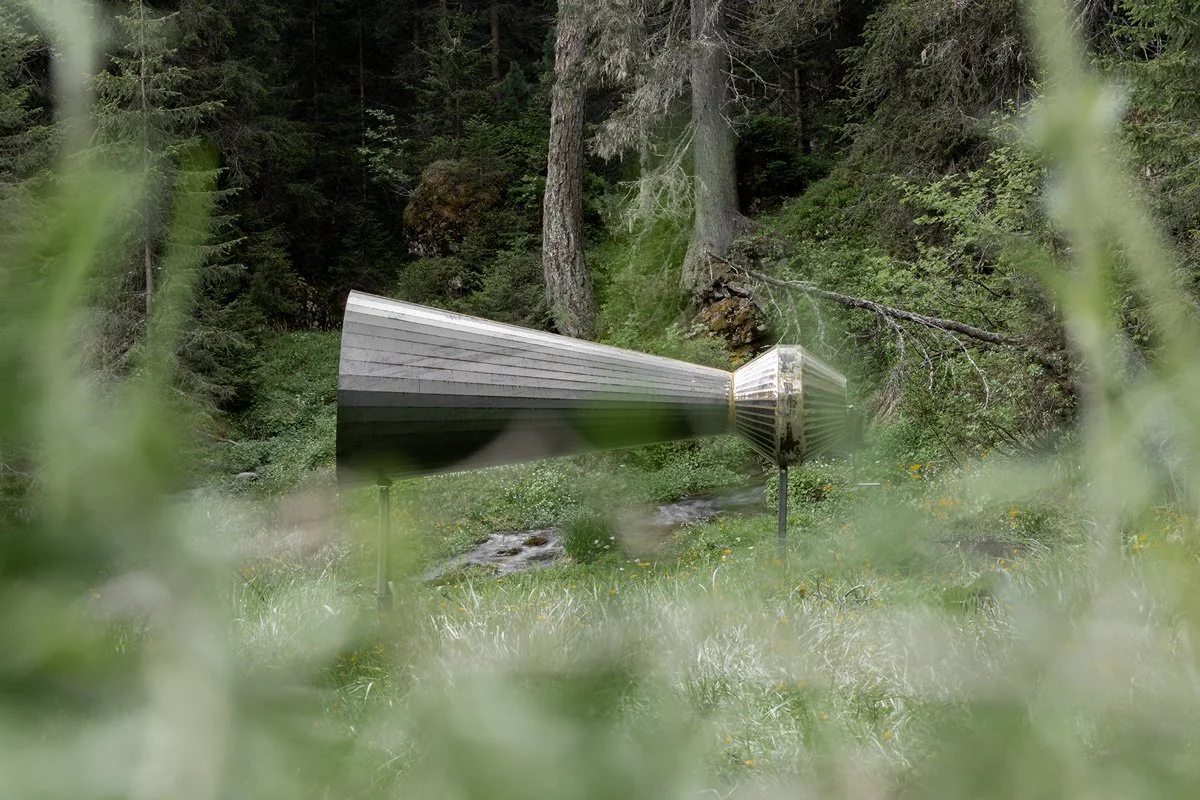Trace of Land
ELSE - Zhifei Xu, Zimo Zhang
Imagine a large, round hay bale traversing the slopes of Armentara, climbing, descending, leaping, and leaving a trail of dry grass behind. Well, the installation you see here brings that imaginary vision to life. Freed from its compressed form, the hay bale creates a path that, thanks to a rebar structure commonly used in construction, rises into a pergola, which also becomes a shelter for passersby. From a poetic vision, the installation transforms into landscape architecture, dialoguing with the nearby “tablà”, the wooden barns typical of the Ladin valleys. ELSE is, in fact, a duo of architects. They use imagination to speak about the origins of their discipline, shelter, whose construction, like haymaking, is linked to this year’s theme: manual labor, the development of technique, and materials.








Exhibit place La Crusc
Millennia ago, the Santa Croce plateau was probably a pagan place of worship. After all, as we also know for Putia meadows and Goma pass, the archaeological evidence shows that these areas have already been frequented for at least 5000 years, meaning, since the Neolithic period if not even earlier. Life in the mountains was difficult then and continued to be so for centuries to come. When, having switched from animism to monotheism, the first Christians in the area no longer erected altars or votive pyres, but built a shrine to ask for nature’s benevolence. Around the year 1010, they built a chapel in the meadows at the foot of Sas dla Crusc/ Sasso di Santa Croce. In the 15th century, a small church was built in place of the chapel, which at the end of the 17th century was deconsecrated by the then Austrian emperor and thus subject to decay. The valley inhabitants and some pilgrims restored the small church, saving it from ruin. In the middle of the 18th century, the little church was enlarged and provided with a bell tower. There are several legends surrounding it, one of which tells of Ottwin, Count of Lurn and Val Pusteria, who was guilty of heresy during a pilgrimage to the Holy Land. After returning to his South Tyrolean homeland, overwhelmed by guilt for his sin, he decided to live as a hermit in a hut at the foot of the Sasso di Santa Croce rocks, spending his days seeking expiation. Ottwin’s legendary vicissitudes (you will find more about the myths in the in-depth studies) take us back to those of the many monks and saints (St Jerome among them) who lived far from civilisation and to the secular and real story of Jürgen König (met in Medalges’ description) and reminds us how the mountain is one of the best places for both personal and religious reflection and meditation. And how could it be otherwise when faced with beautiful landscapes and natural phenomena such as the alpenglow, which dyes most of the Dolomite peaks red, then turning to violet, and causing the Sasso di Santa Croce rock wall to be even more marvellous, glowing in the evening light.
Speaking of the verticality of the walls of this mountain, the legacy of Reinhold Messner, and his brother Günther, also passes through here. Indeed, on July 7, 1968, they climbed the inviolate Pillar of the Middle. The ascent involved climbing a section whose difficulty, at the time, had never been exceeded: VII+/VIII-. In one fell swoop the Messner brothers, with Reinhold as route leader, opened a new route (which for the next 10 years no one would be able to repeat) while also opening a new chapter in the history of mountaineering and sport climbing.












